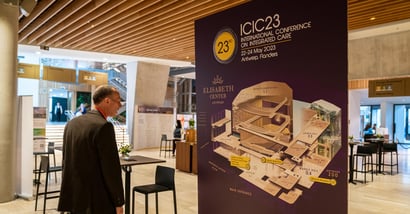In this project, the different partners implemented two different pathways of homecare for oncology patients:
-
In the first care pathway, a blood draw on the day before admission is done by an Onco@home home nurse at the patient's home. The home nurse also questions any symptoms and checks vital parameters. On the basis of this results, the doctor checks whether therapy can safely continue the next day. Applicable medication can also be prescribed and prepared in advance. This facilitates the daycare admission and allows the patient to return home sooner. In case of insufficiently recovered blood values, an unnecessary transfer to the hospital can be avoided. This care pathway is being implemented in AZ Groeninge, OLV Waregem and SJK Izegem.
-
In the second care pathway, subcutaneous chemotherapy is administered at home by a hospital oncology nurse. By default, all subcutaneous administration takes place in the oncology daycare hospital. At AZ Groeninge, only the first administration of the cycle and weekend administrations are administered in hospital. The other administrations are carried out by an AZ Groeninge oncology nurse at the patient's home, after carrying out a brief telephonic anamnesis. This way, the transfers to the hospital are limited while assuring a good therapy compliance.
Strategic challenge
With this project, Kom op tegen Kanker wants to continue investing in innovative and patient-centred care. At the same time, Kom op tegen Kanker wants to use this project to prepare policy and bring together all stakeholders around this theme and identify the challenges. A sustainable system of homecare that makes this form of care widely available to (oncology) patients is the ultimate objective.
The project was divided into 3 major parts:
-
Implementation of homecare by the hospitals and home care organisations
-
Elaboration of the business case (carried out by Möbius, in collaboration with the various partners)
-
Qualitative study of the feasibility of homecare (conducted by Kom op tegen Kanker)
To develop the business case, Kom op tegen Kanker asked us the following questions:
-
What is the experience of patients regarding homecare and which care pathway do they prefer?
-
How does this compare with the experience of patients in the standard care pathway?
-
What are the costs and revenues for each of the partners in the adapted care pathway?
-
How does it compare with the costs and revenues of the traditional care pathway?
Approach
To understand patients' experience and preferences in the business case, we surveyed 200 patients at the three hospitals. Both patients included in the Onco@home programme (n=50, AZ Groeninge) and patients not included (n=50 in each of the 3 hospitals) were surveyed.
We mapped costs and benefits in great detail in close cooperation with the partners. This was done through the method of Time-Driven Activity Based Costing. For this, we carried out time measurements in the hospitals and in the home care situation. Furthermore, we analysed detailed accounting data and patient-level billing data.
Results
The conclusions and policy recommendations were compiled by Kom Op Tegen Kanker into a final report. This report was shared with all stakeholders involved (policy, hospitals, home care organisations, patient associations ...).
During a digital event organised by Kom Op Tegen Kanker, we presented the results of the business case (in Dutch):
Key take aways
-
Patients eligible for homecare are very satisfied with this and prefer this pathway above the standard pathway. Patients who were not included in Onco@home - either because they do not want to or because they are not eligible – 50% would like to be treated via homecare. It goes without saying that the choice of homecare is definitely an added value for (eligible) patients.
-
In the business case, it was noted that reimbursement in homecare for both care pathways is currently insufficient. To sustainably support both care pathways, a structured financing mechanism would be beneficial for all parties involved.
The results of the study were also discussed in the Voka Healthcare community by Dr Koen Van Eygen (AZ Groeninge), Isabel Weemaes (Kom op Tegen Kanker) and Inge Alloo (ZorgConnect) on 25 June 2020.









